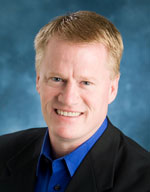Column: Desmond Howard’s Unlikely Legacy
Desmond Howard stands about 5-foot-8 – I don’t care what the program said. When Bo Schembechler moved the Cleveland native from tailback to receiver, it virtually eliminated any chance Howard had to win the Heisman Trophy. In its first 55 years, only one receiver had ever taken it home.
But then, just playing at Michigan practically knocked Howard out of the running in the first place. Only one Wolverine, Tom Harmon, had ever won the award – and that was back in 1940.
Schembechler never promoted any player for any award – Heisman or otherwise. Because, as he often said, “Nothing comes before The Team, The Team, The Team.” When Bo stepped down in 1990, Gary Moeller took over, and followed the exact same policy.
In the modern era – when Notre Dame’s Joe Theismann started pronouncing his name as Theismann to rhyme with Heisman, and Oregon paid big money to put a huge poster of Joey Harrington on the side of a Manhattan building – Michigan’s policy was positively anachronistic.
Bo didn’t care. “That is not how a Michigan man earns his hardware.” After all, he promised, “Those Who Stay Will Be Champions,” not, “Those Who Stay Will Get Their Faces Painted On New York City Skyscrapers.”
But in 1991, Howard got the nation’s attention anyway, starting with his leaping touchdown catch against Notre Dame. You can still see it painted on the walls of local bars 20 years later. By the last game, Howard had already piled up so many points, all the tailbacks and quarterbacks and kickers couldn’t catch him.
But that last game was still worth watching. Michigan beat Ohio State for the fourth straight year – Howard never lost to his homestate school, winning four Big Ten rings – but that’s not what people remember. No, in the second quarter, Howard caught a punt at the seven-yard line. He sliced through the first wall of defenders, then faked a few out by cutting to the left sideline, leaving only the punter to stop him. “And that wasn’t even fair,” he joked years later.
On his way to completing the longest punt return in Michigan history, with the Heisman Trophy all but sewed up, Howard had to make a decision: Should he strike the familiar Heisman pose, or not? He finally realized he’d never get another chance. He flashed the pose, just for a second, but that was long enough to create one of the most famous photos in football history.
Michigan used to keep the stadium open during the week for visitors. When I used to run the steps, I’d see visitors from all over the world looking around. They invariably did three things: ran out of the tunnel to touch a banner that wasn’t there; they dived in the corner of the endzone to mimic Howard’s leaping catch against Notre Dame; and they re-enacted Howard’s punt return against Ohio State – usually pausing at mid-field to catch their breath – which they always punctuated with Howard’s Heisman pose.
When two of the three things fans did when they thought no one was watching were inspired by one guy – well, that guy isn’t just a great player. He is an icon.
But for me, what happened after all that was better: Desmond Howard graduated on time, he married an attorney, and now their daughter is enrolled at Michigan, too. She probably won’t win the Heisman – her odds are even longer than his – but she doesn’t have to. The Howards already have one more Heisman Trophy in their home than anybody ever thought they would.
Editor’s note: On Saturday, July 16, 2011, Desmond Howard will be formally enshrined into the College Football Hall of Fame in South Bend, Ind.
About the author: John U. Bacon lives in Ann Arbor and has written for Time, the Wall Street Journal, and ESPN Magazine, among others. He is the author of “Bo’s Lasting Lessons,” a New York Times and Wall Street Journal business bestseller, and “Third and Long: Three Years with Rich Rodriguez and the Michigan Wolverines,” due out this fall through FSG. Bacon teaches at Northwestern’s Medill School of Journalism, and the University of Michigan, where the students awarded him the Golden Apple Award for 2009. This commentary originally aired on Michigan Radio.




